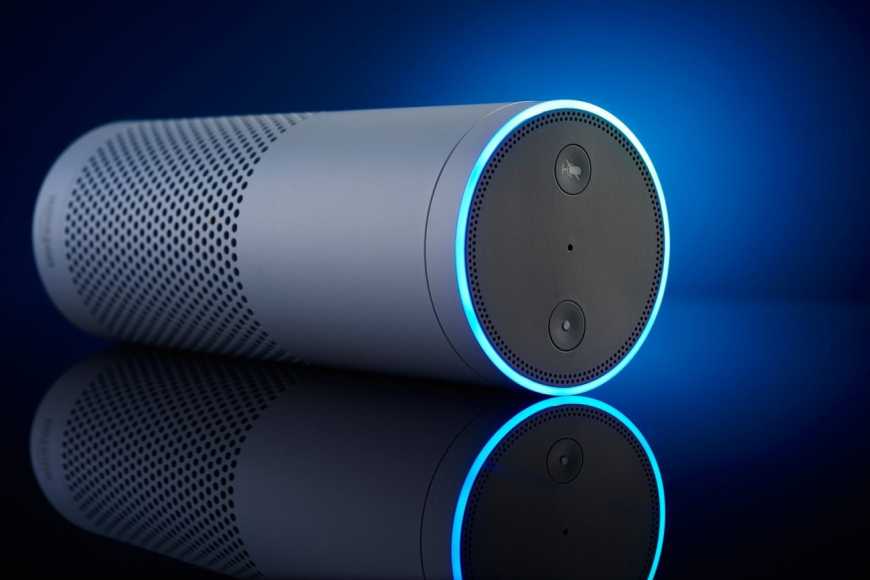Why Alexa Will Soon Be Handling Customer Support Calls — and What Businesses Should Do to Prepare – When you think of calling customer support, you probably get a sinking feeling. And for good reason — traditional phone support is notoriously inefficient. Agents often have little-to-no context about who you are, your needs, your purchase history or the number of times you’ve already called, emailed or chatted about your problem. How many times have you, as a customer, searched through piles of bills to find your account number or repeated your issue to several different support agents until you turned blue?
But, good news — voice computers (of which there will be 33 million in our homes by the end of 2017) will fix what’s broken about phone support without losing the most powerful communication tool ever invented — the human voice.
Voice today
Today, you can walk into your kitchens and interact with a friendly voice through your entire evening. From putting on your favorite cooking music, to getting step-by-step instructions for making that souffle, to ordering movie tickets and a Lyft to take you there. You can engage with dozens of your favorite companies at once — all without lifting your thumbs.

But, what if something goes wrong? While the voice recognition and machine learning powering today’s voice computers are excellent at starting these tougher conversations, they are not always great at finishing them. At some point, a human needs to get involved.
Will we have to stop what we’re doing, look up a phone number and call customer support? Of course not. Voice computers have a speaker and a microphone and are connected to the internet. They’re the natural replacement for that nearly extinct beast, the “home phone.”
Best of all, these new “home phones” have something the old phones did not — context. More specifically, they can be capable of:
- Verifying your identity at the sound of a single word
- Understanding your intent based on your actions immediately before your conversations
- Looking at your past purchases
- Remembering and learning from previous questions
- Connecting you directly with the right person to handle your request, without any of the overhead of a traditional phone system (goodbye clicking and ringing noises)
- Putting your request into the context of the sounds (and sights) of what’s going on in your home right now (pause for creepy factor)
So, let’s say your oven is broken. Alexa will know which oven you have based on your location and your purchase history. She can play you some instant tips from the manufacturer in case you’ve lost the manual, and ask if that is helpful. If not, Alexa can seamlessly connect you for a conversation with exactly the right live person to continue the conversation.
Think about what didn’t happen in this scenario: No looking up the phone number to call. No waiting on hold or navigating a phone tree. No “let me transfer you to the right department,” “can you repeat your name and address?” or “please read me the model and serial number.” Those small distinctions mean that we can expect to hear customer inquiries come through voice-powered tech as fast as you can say “Alexa.”
What companies need to do next
So, what do companies and their customer support departments have to do so they aren’t left behind while their competition beats them to voice?
Invest in content, for both bots and people.
As a business, you likely have already invested in self-service content — content that your customers can search through when they have a question. Voice bots are essentially another way for a customer to conduct self-service: They listen to the question, sift through existing answers and respond with the answer that seems to best fit.
Bots need somewhere to draw their answers from in response to the questions that come up. Therefore, it is imperative that a strong “training ground” of self-service content that is authentic to your brand and overall tone is in place before implementation of a voice bot. This content is also useful to your human agents — it helps them pick up right where the bot left off.
Build bridges to human interaction.
To make the bot-to-human transition as smooth as possible, certain bridging tactics must be built into your technology. To start, have your voice bots ask whether the question was answered correctly. If not, ensure that they offer the ability to continue the conversation on another channel according to the customer’s preference.
Remember: Voice bots are an enhancement, not a replacement.
As mentioned above, voice bots are a great conversational interface to navigate all the online content that you’ve made available for self-service, but your customers will still need to speak with a live agent to work out particularly personal or high priority issues. If you try too hard to deflect those calls, you’ll end up with a disappointing customer experience.
The most important takeaway for a business owner is this: Conversations with customers are a privilege and an asset. Following your customers and engaging with them through the channels of their choice is not a technology question, it is critical to your customer engagement strategy. Leading your customers back to voice-powered engagement with your company will result in deeper, longer lasting customer relationships — even if the conversation starts with “OK Google.”
Please rate this artcle






